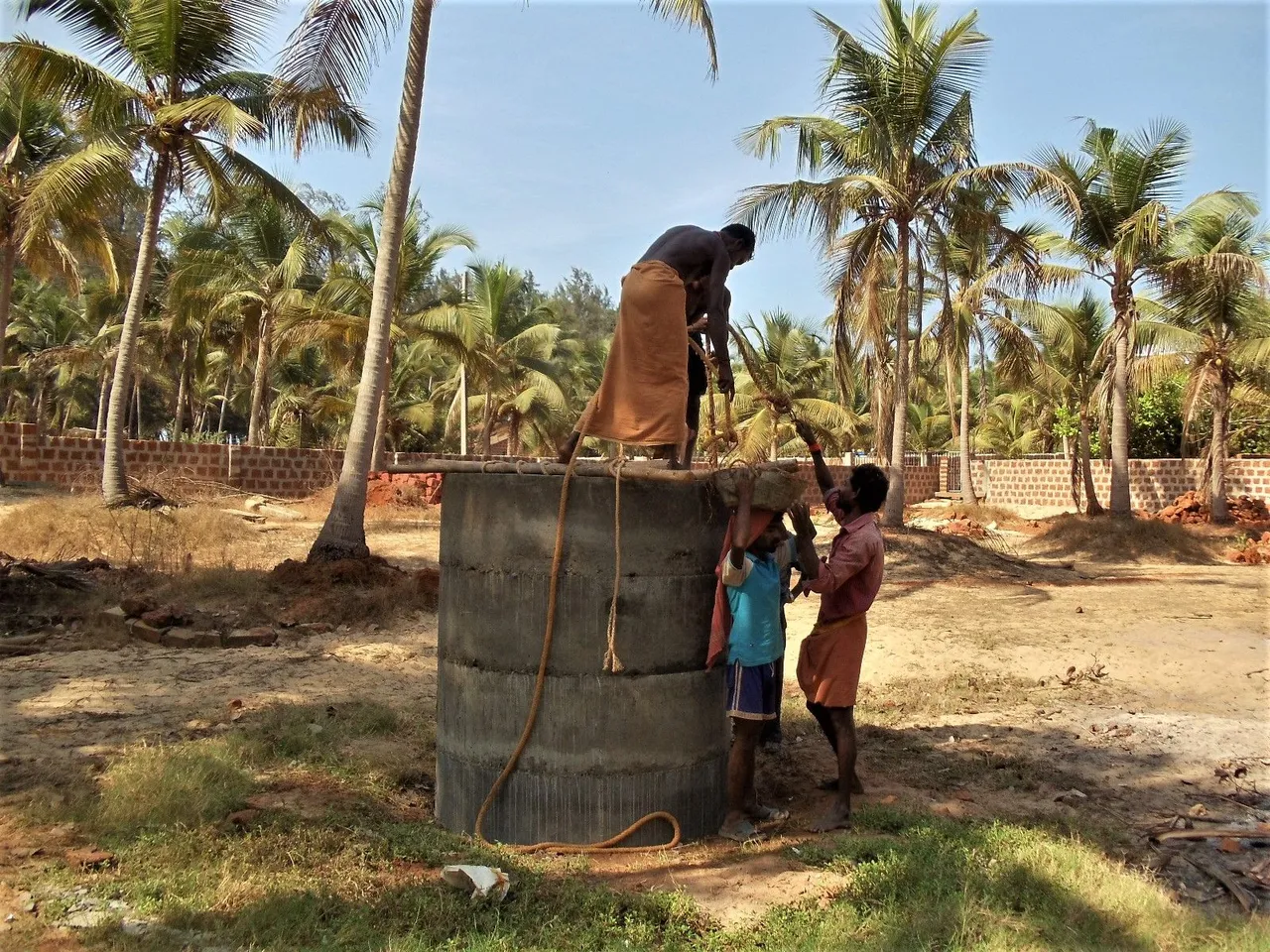
Building well in our back garden.
Hello, all Hive gardeners from all over the world, and hive garden community greetings. This is my 1st post this year.
Here in Norway there is nothing to post about except snow, bare trees, rain, wind, icy roads, and waiting.
So today I am posting about our Indian garden when we built a well for our garden.
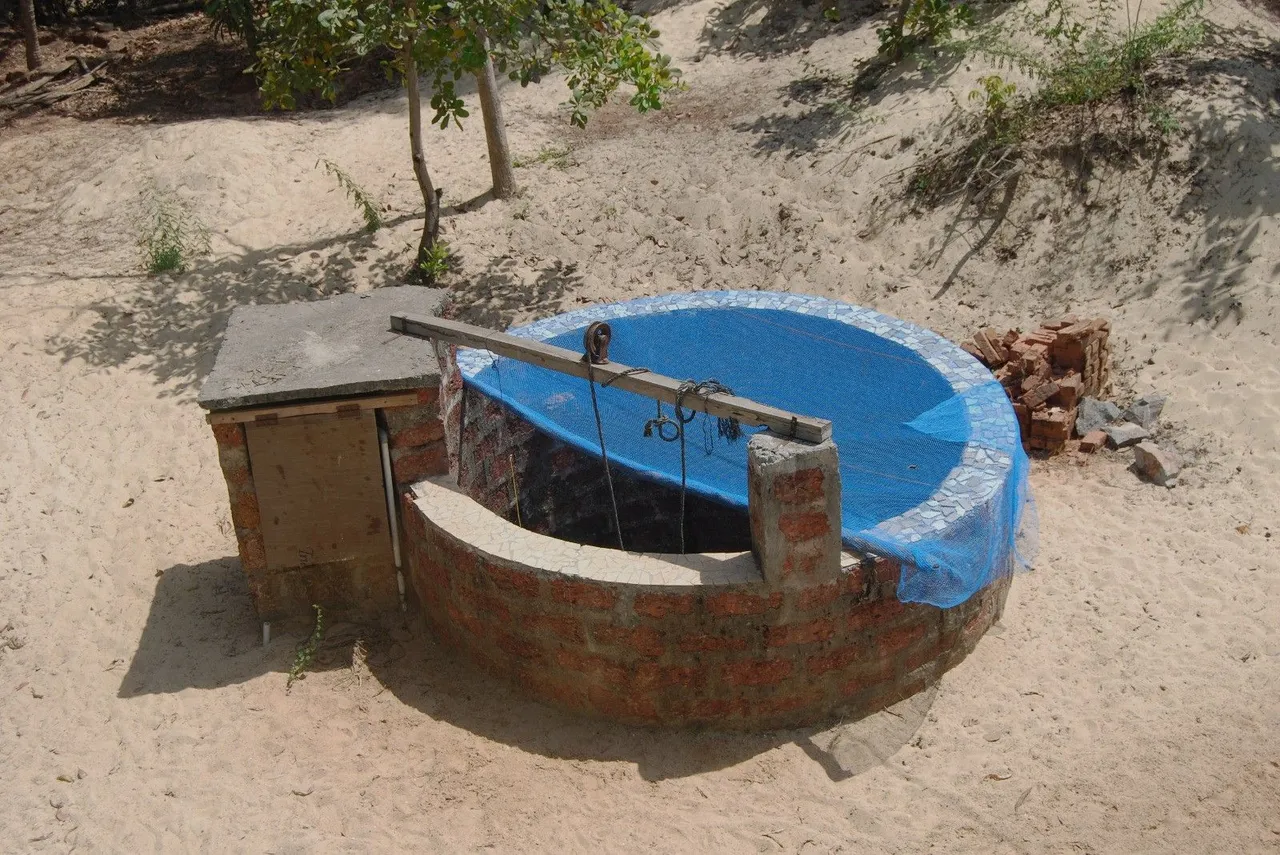
When we built our house we built our first well made of laterite stone. it was very complicated and dangerous when digging sand 6 meters and building it in a specific way. Finally, after getting an underground water spring we got a layer of seashells which was very hard to dig through so the contractor stopped and we had to be satisfied with that work done. Now we always have enough clean water to drink, filtered through several meters of clean fine sand and sufficient supply for all household needs. But when we expanded the garden we required more water so we decided to make a new well behind the house. A contractor recommended that April is the best time for building the well because the groundwater level is low. for safety purposes he suggested building with cement rings. here are some practical photos of how our second well was built and now our plants have a very good water supply without any shortage.
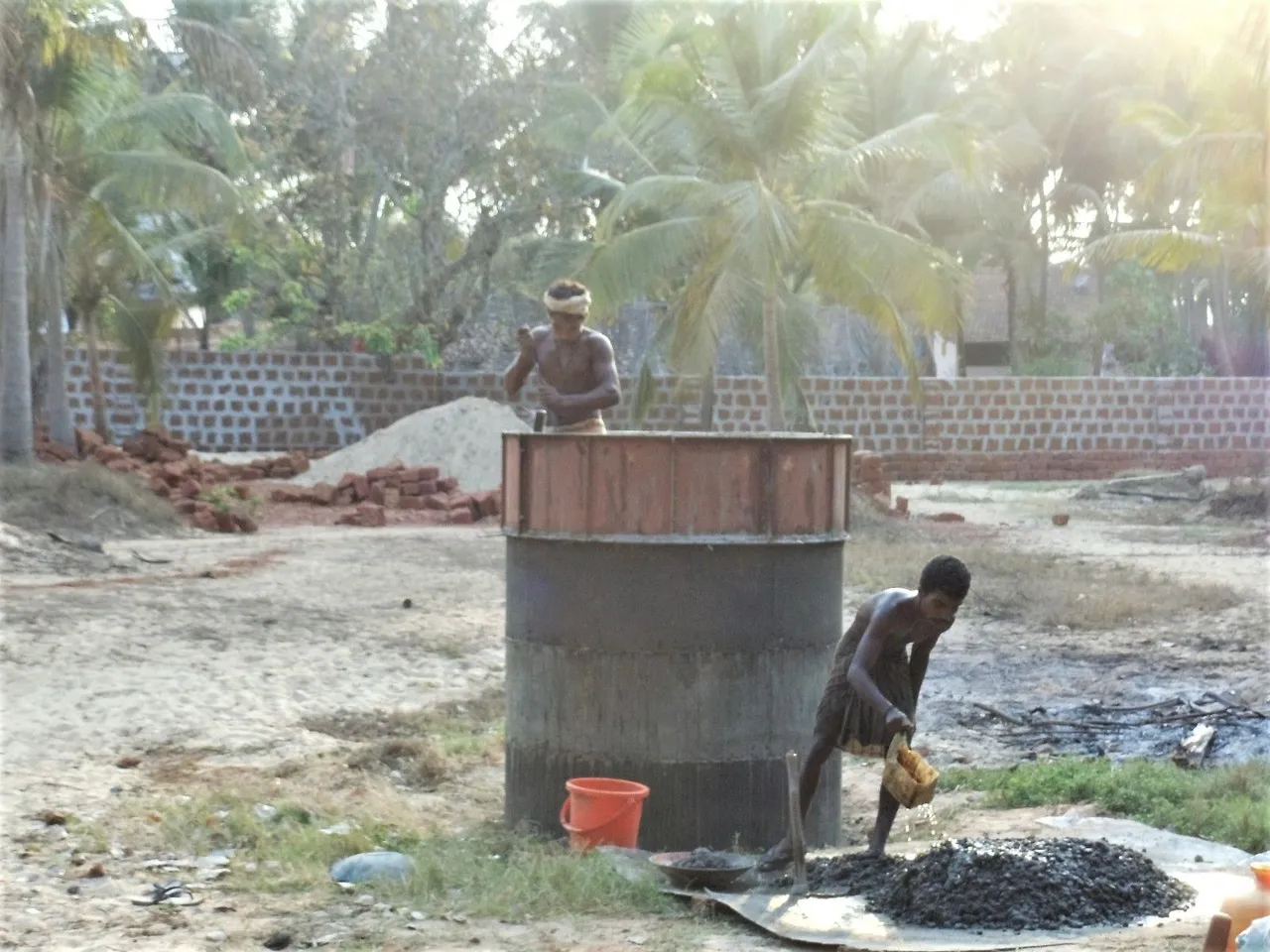
We first decided the place where the well has to be. and according to that the workers started making rings. They were making one day one ring at a time using cement concrete at the beginning of 4-5 days only 2 workers were working they are very skilled and hard-working natives from Kerala in south India. I started taking photos after 4th day they started working. Almost 3 rings were finished and the 4th one in progress.
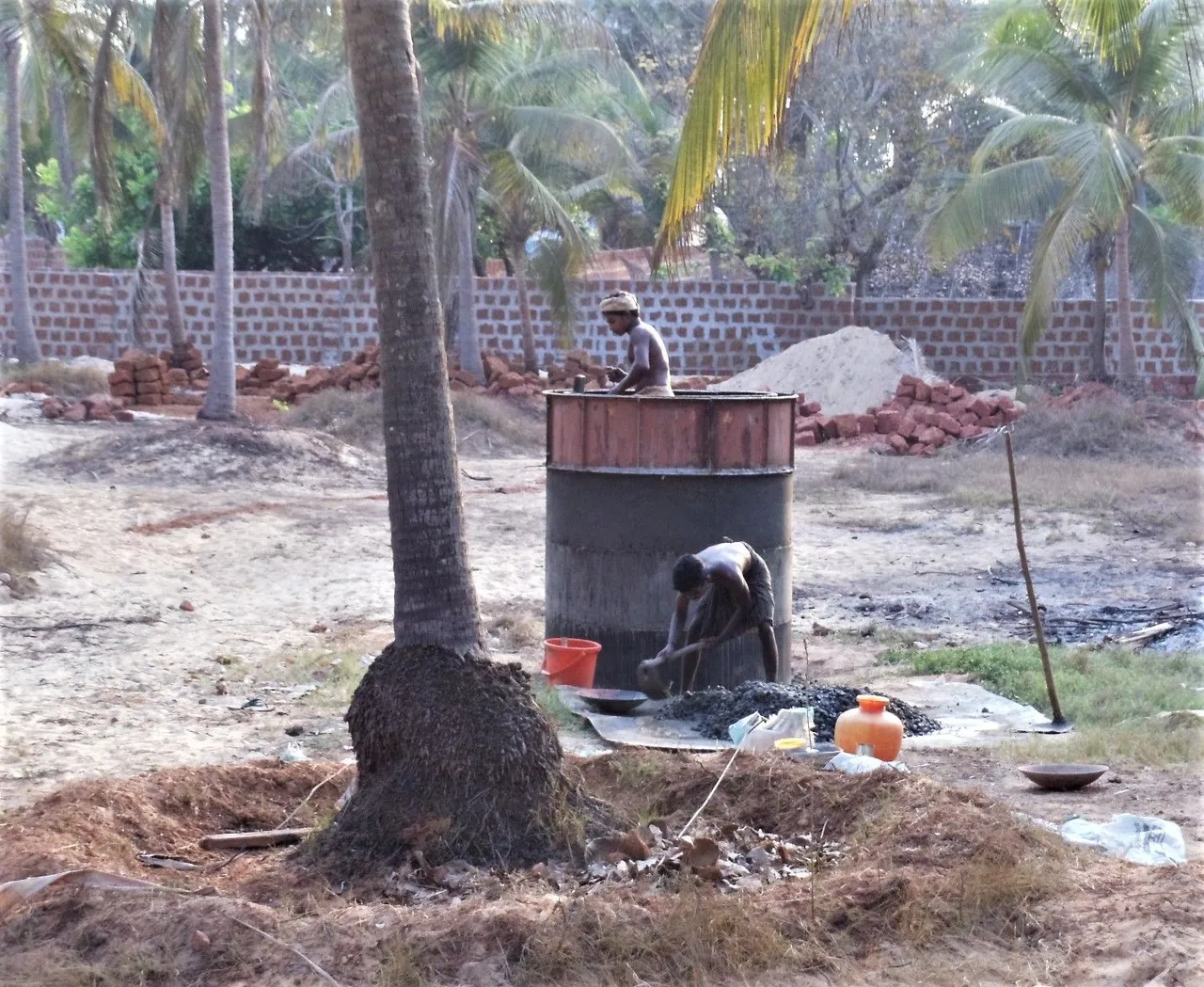
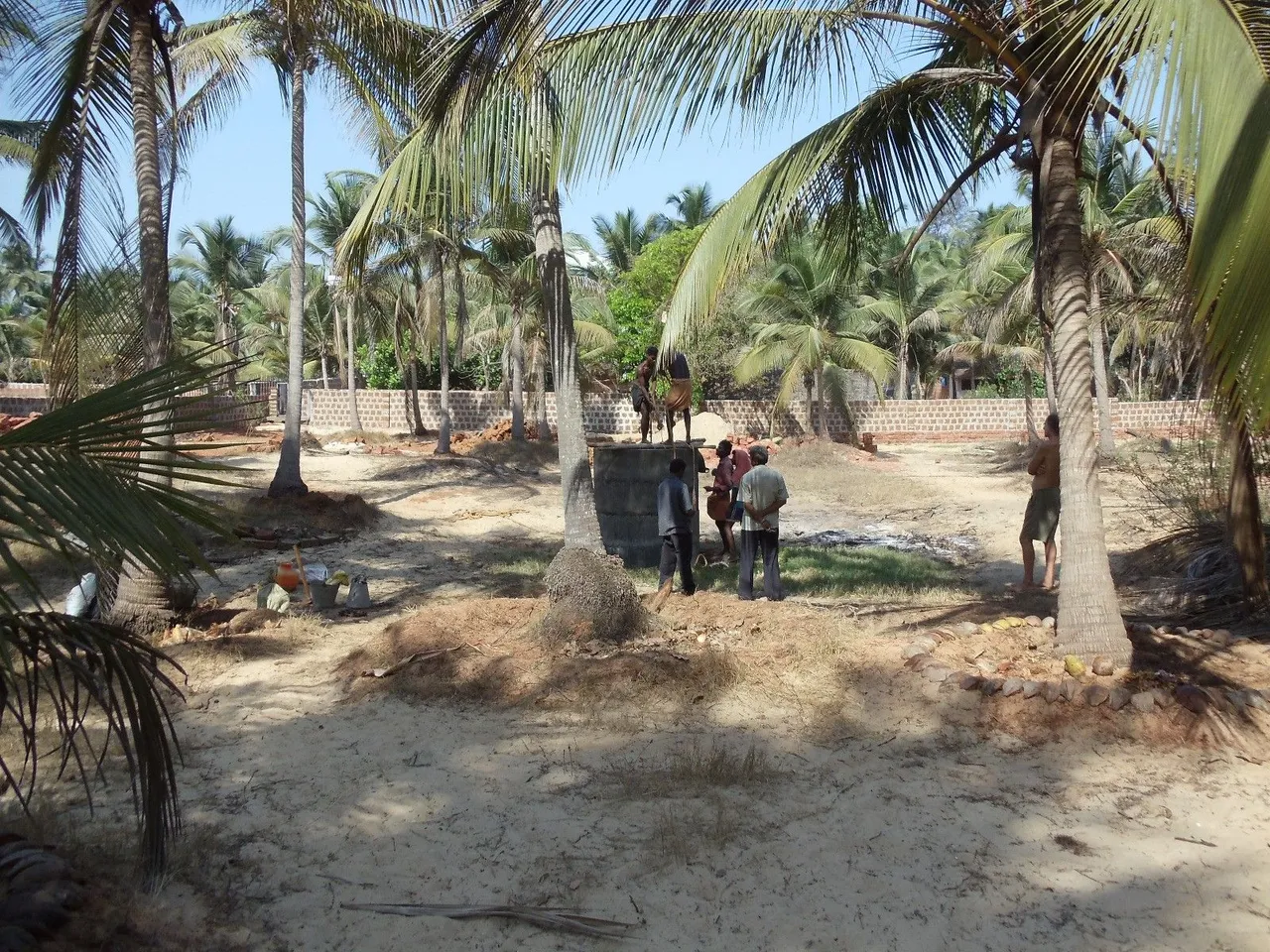
After the 4th ring was finished the contractor came with some more workers and instructed them because he is the one responsible for the project.
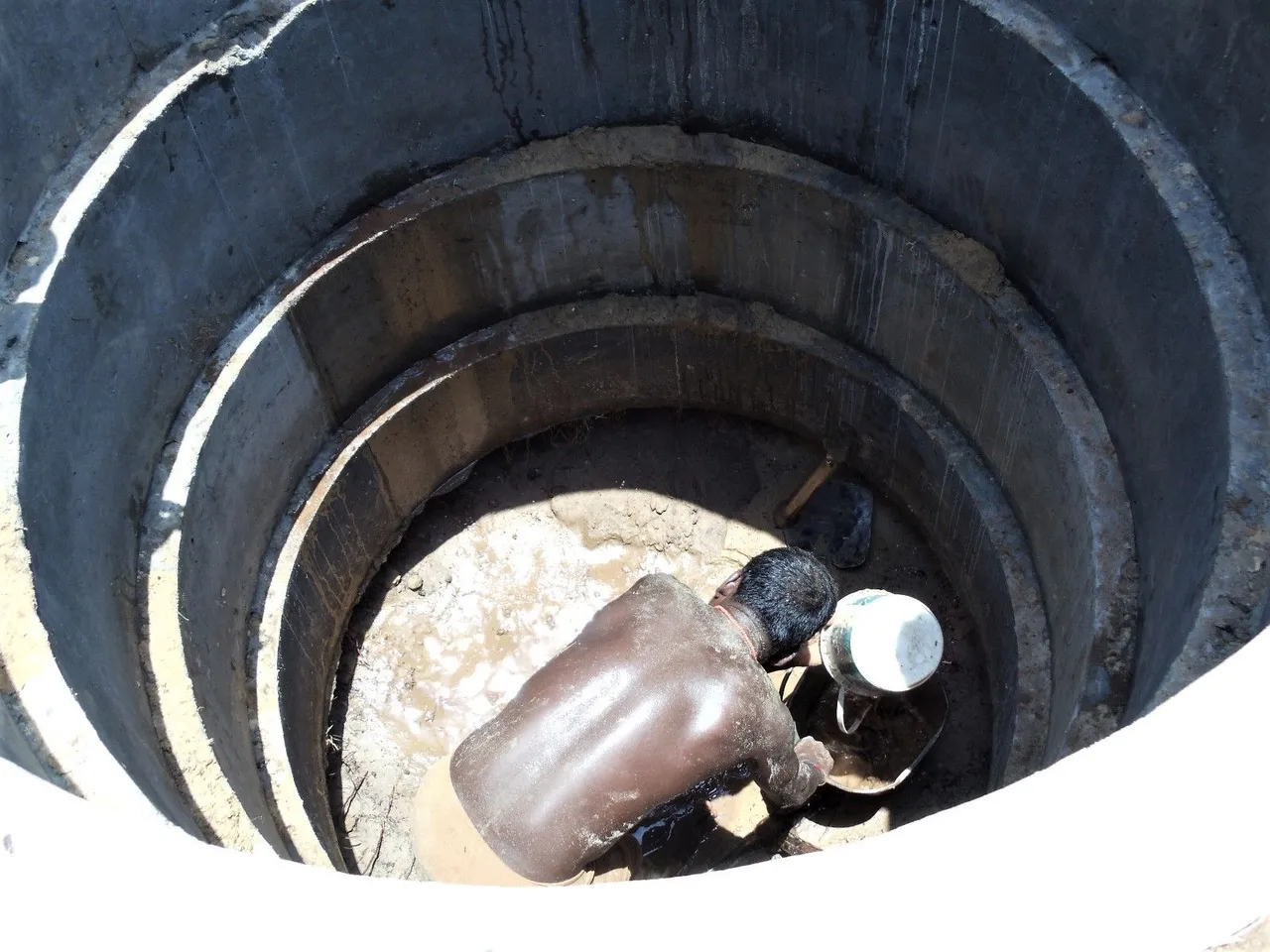
One guy stood inside the rings and started digging sand from the edges of the rings so they could slide lower, slowly and evenly.
this is the base where our ground level was. It was very skilled work.
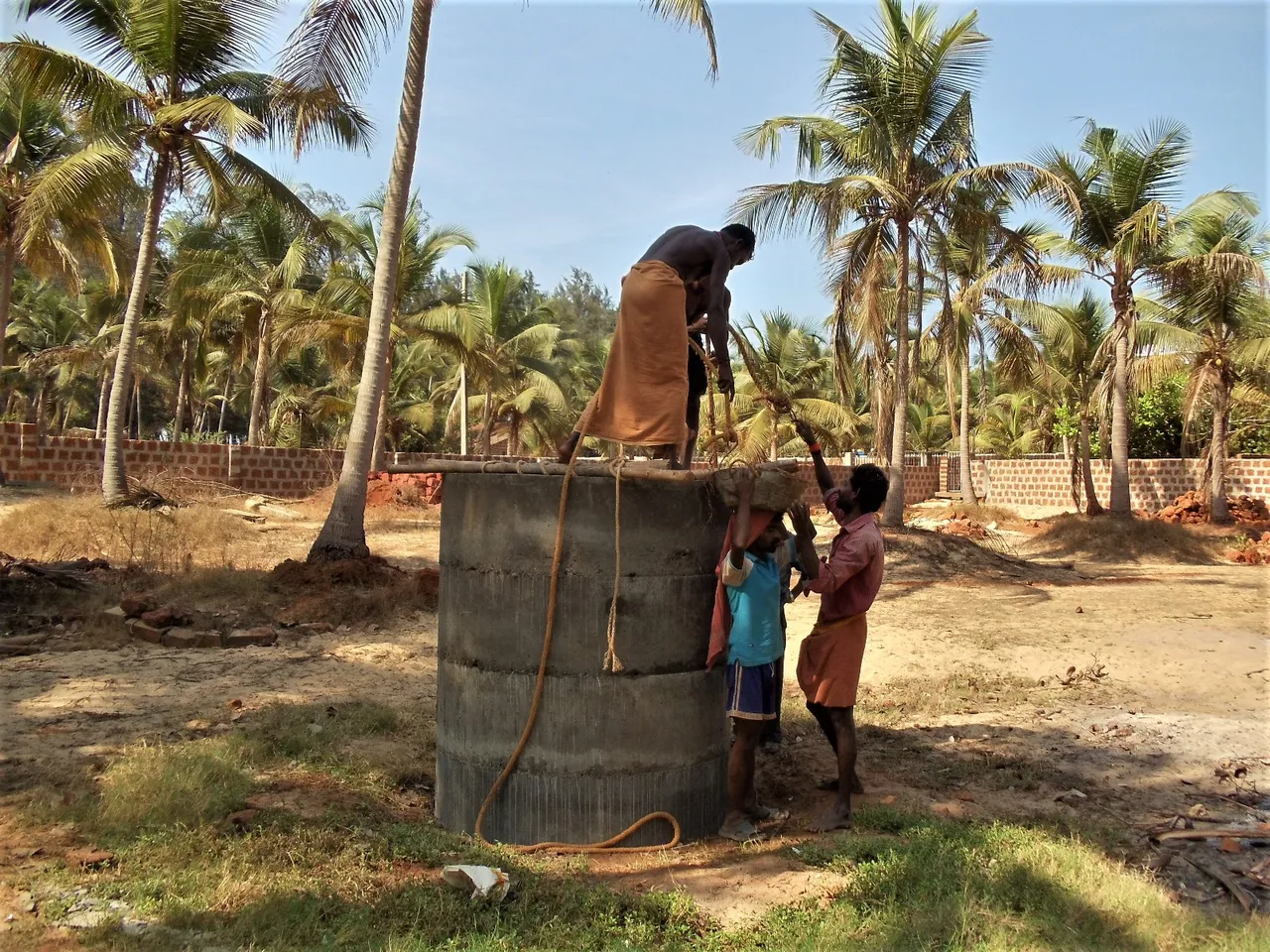
The other workers remained outside with a setup to lift and remove
the excavated sand.
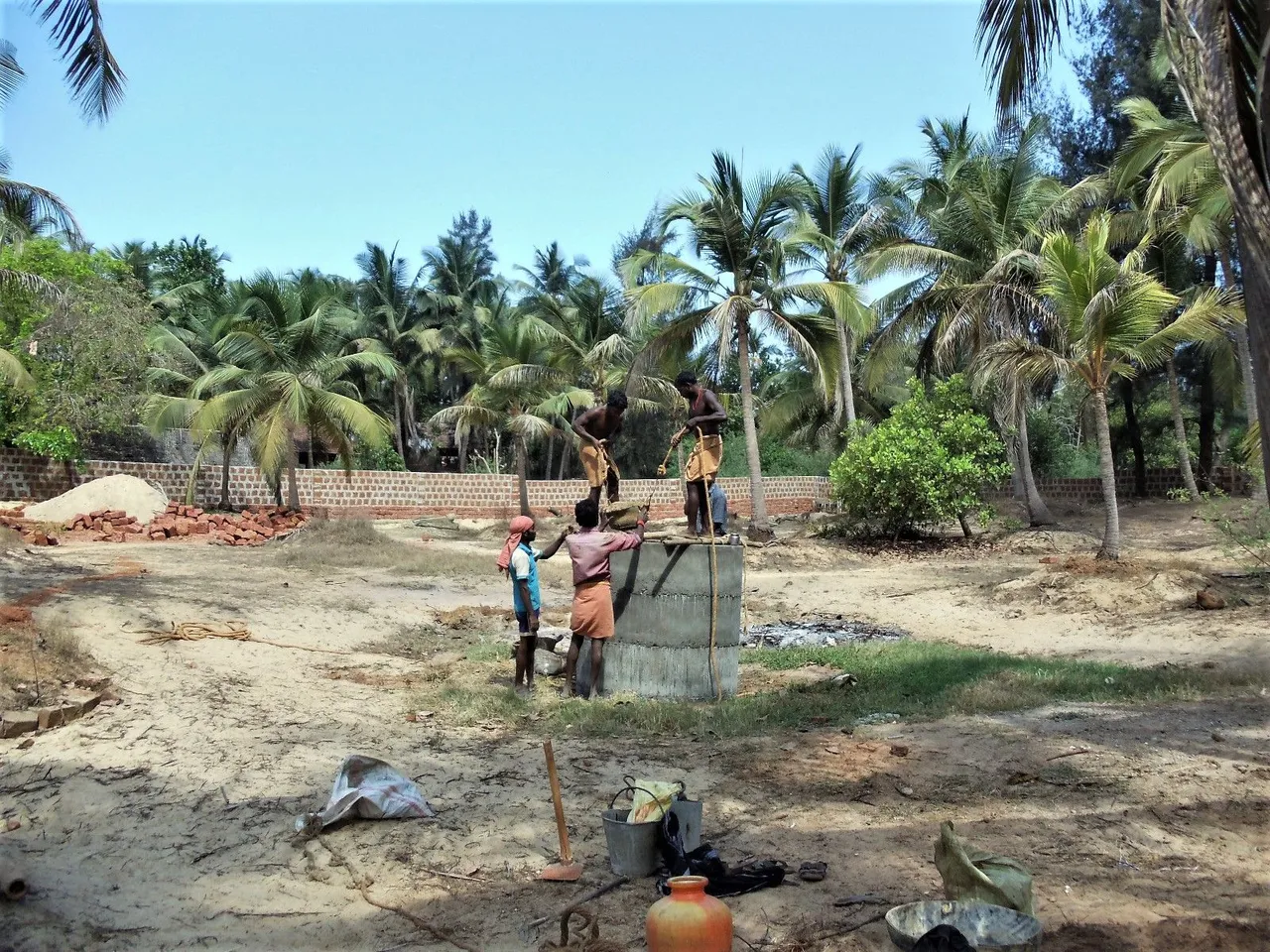
Slowly the rings slid deeper underground. one person inside digging and the others removing the sand.
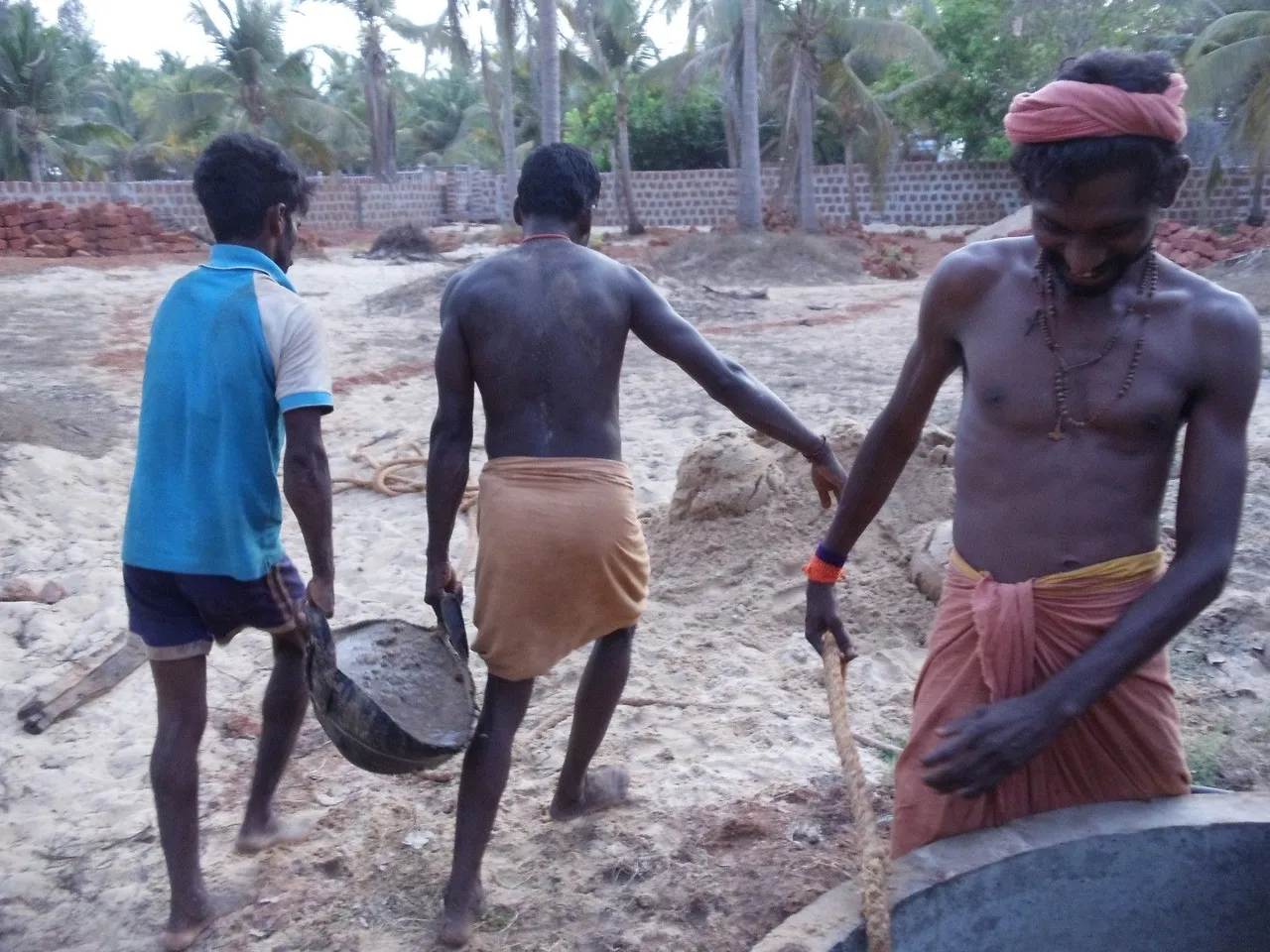
Now the rings were almost submerged with only one ring left above ground.

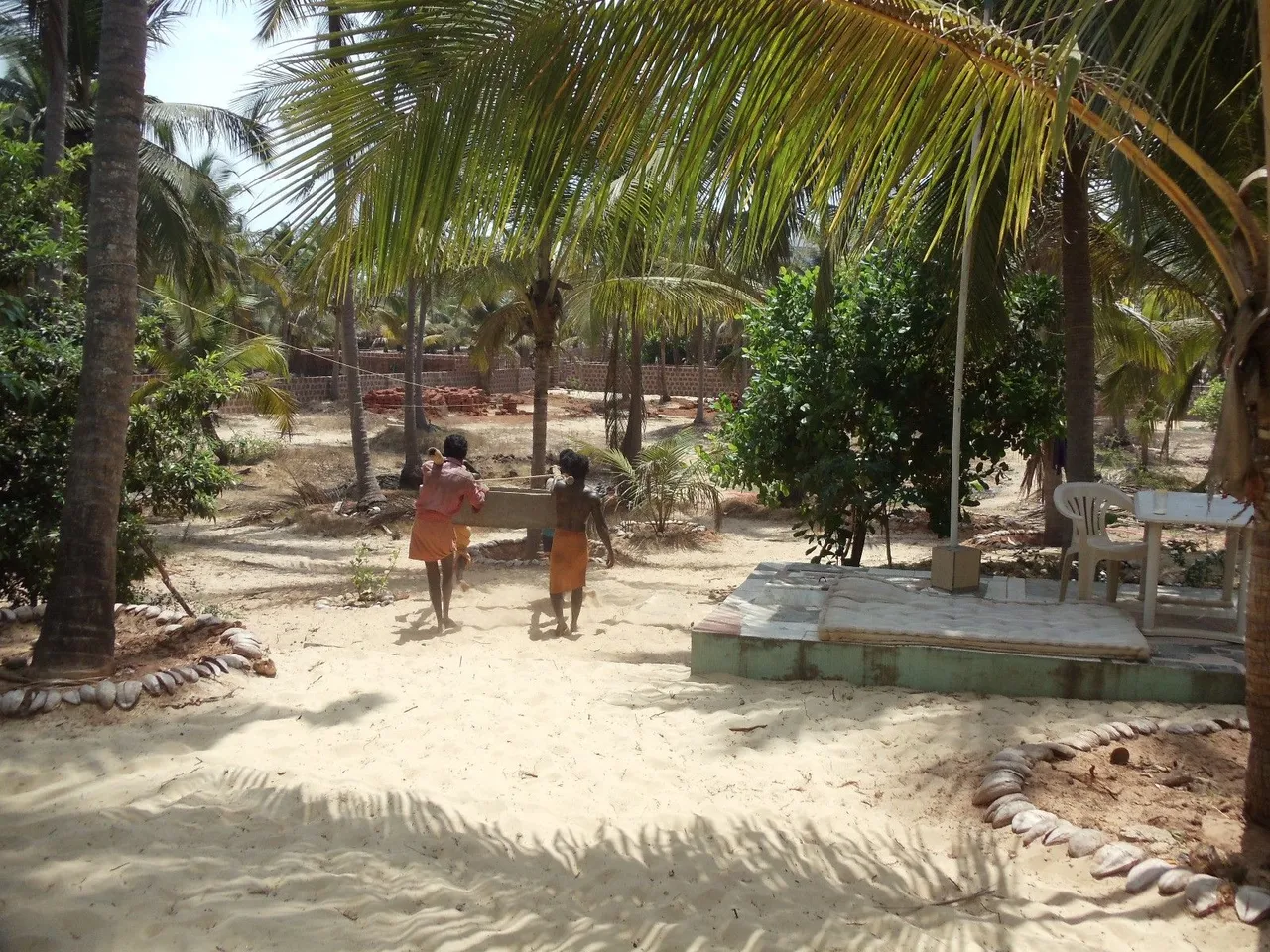
Then they hand-carried two prefabricated rings delivered from their workshop. they were so heavy those 4 workers carried them, all were working barefoot.
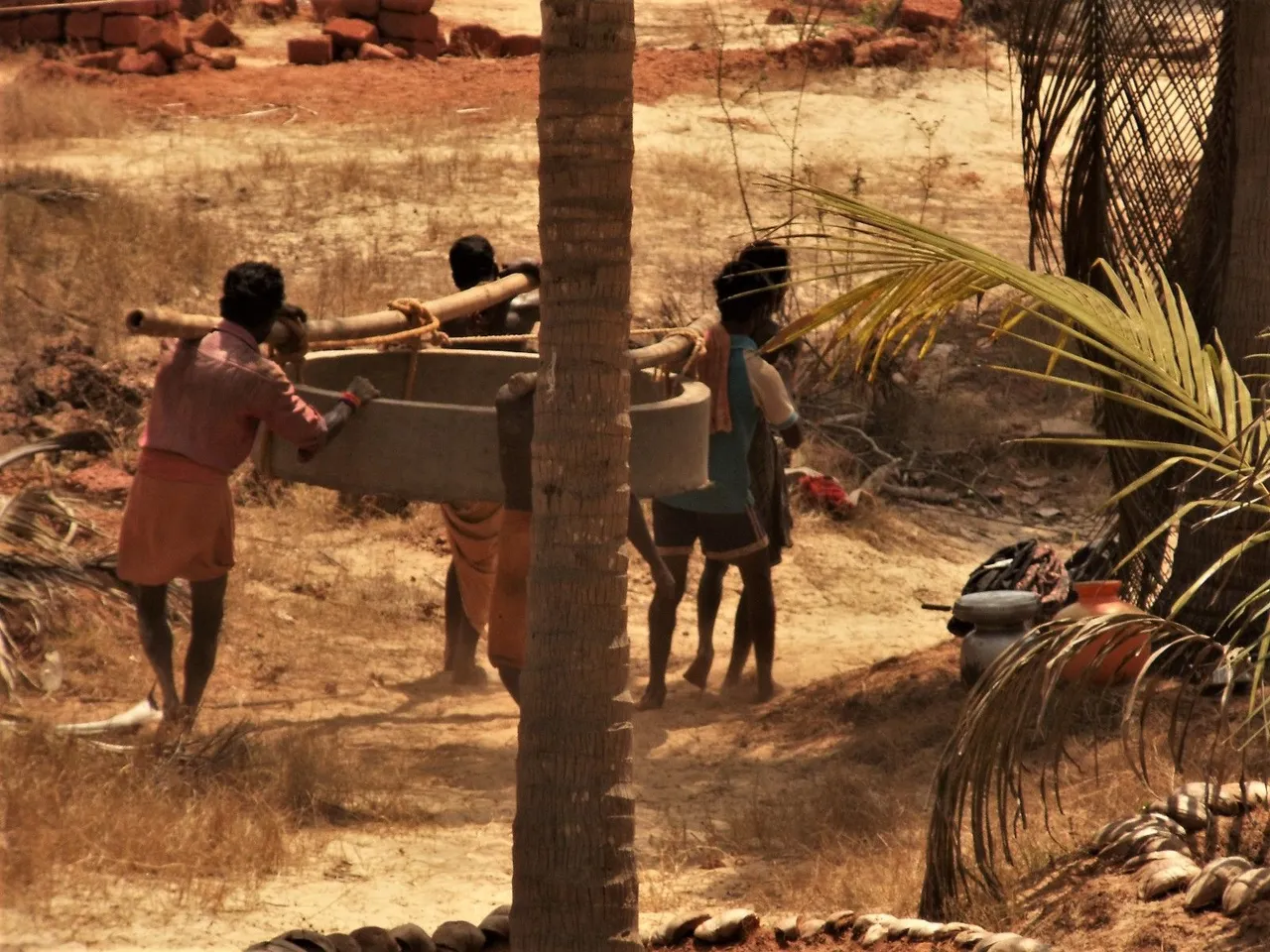
The second ring was also put in place and fixed according to their technique
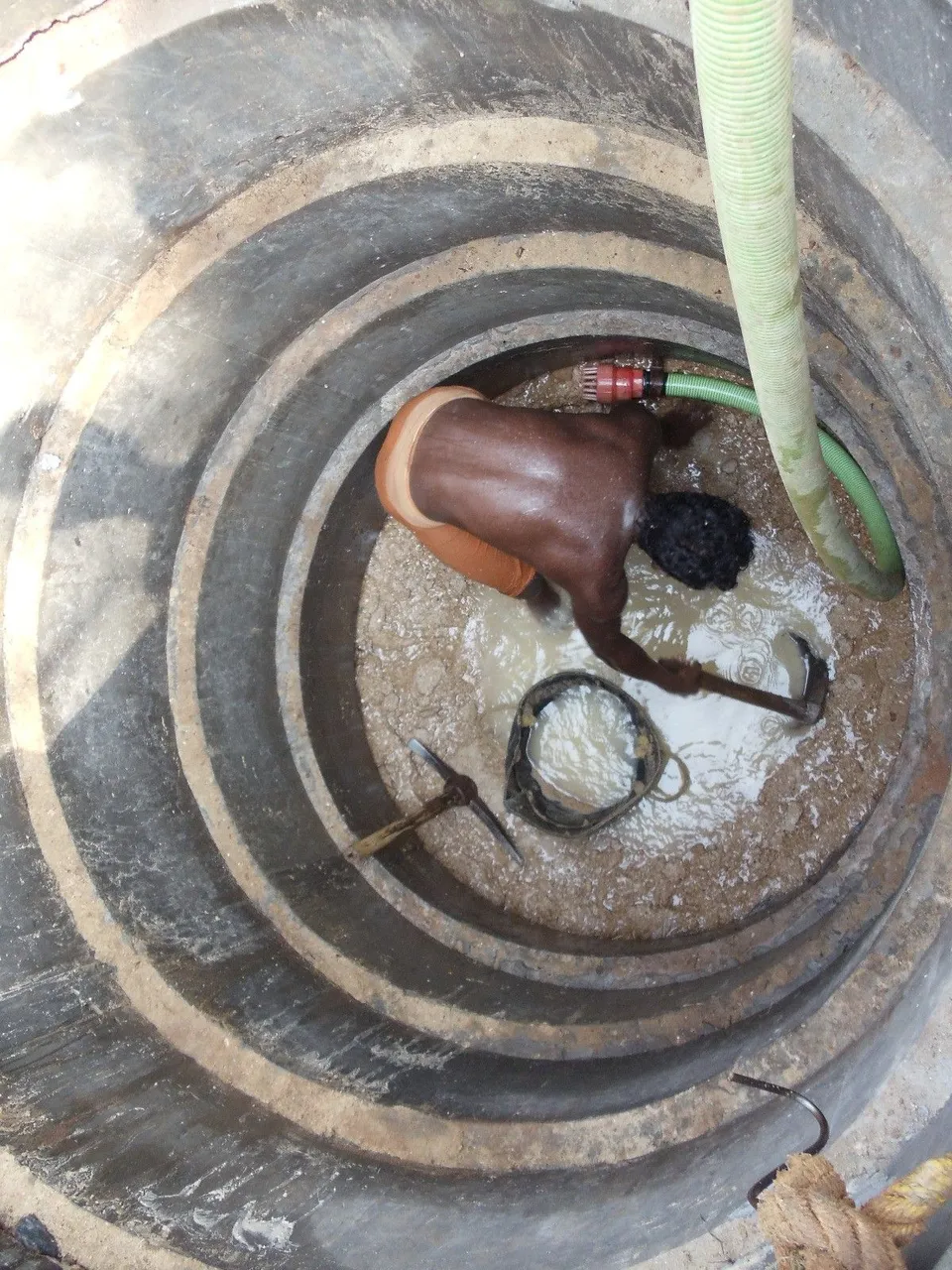
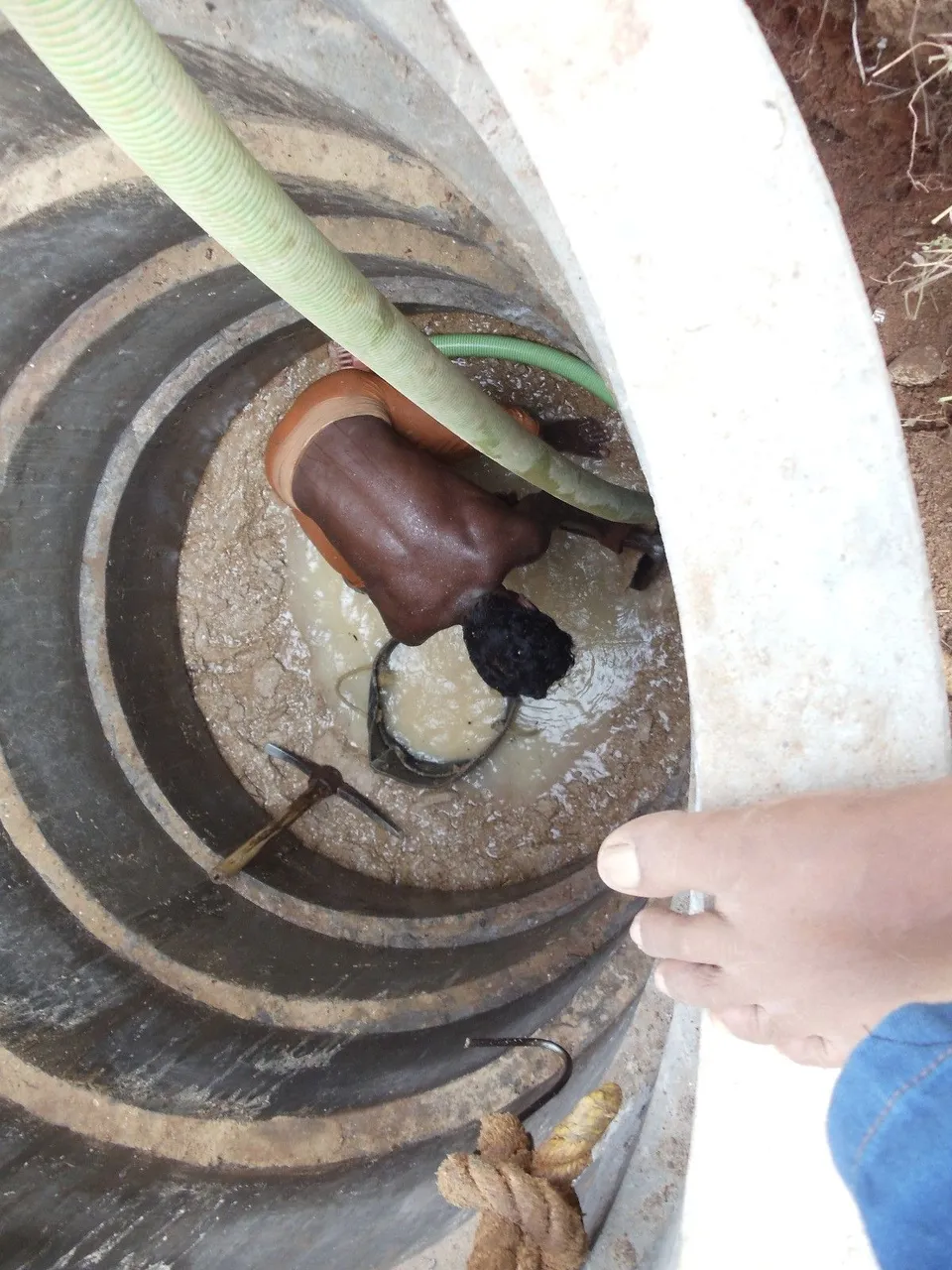
Then after the fifth ring had sunk underground, water started to flow. they were very happy to reach water so quickly and so were we. but their work was not finished, they had to dig a little deeper. they used a pump to drain the water as they were digging. The same guy digging but now with another one inside helping him to lift the heavy wet sand and the others pulling it up and carrying it away.
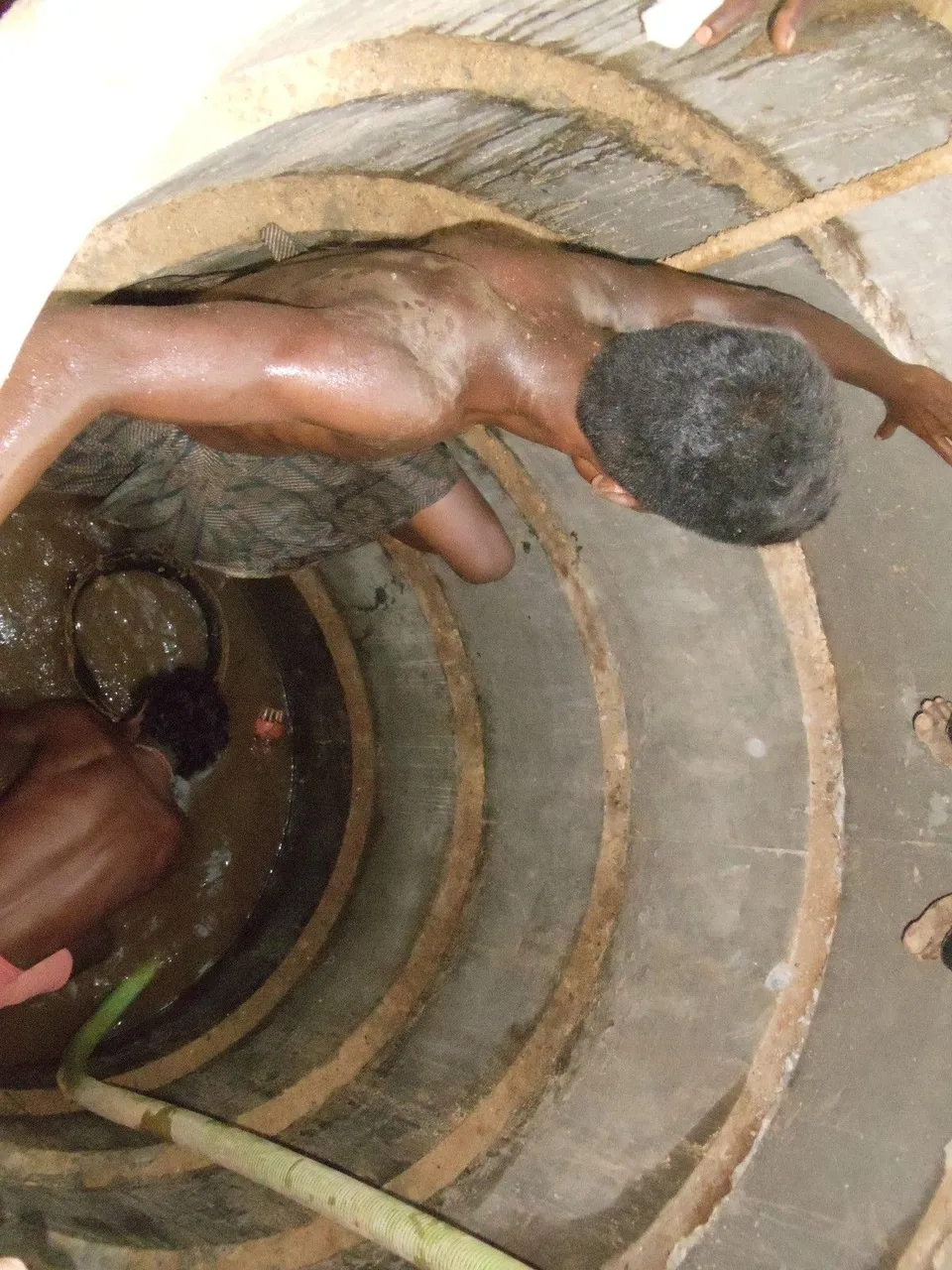
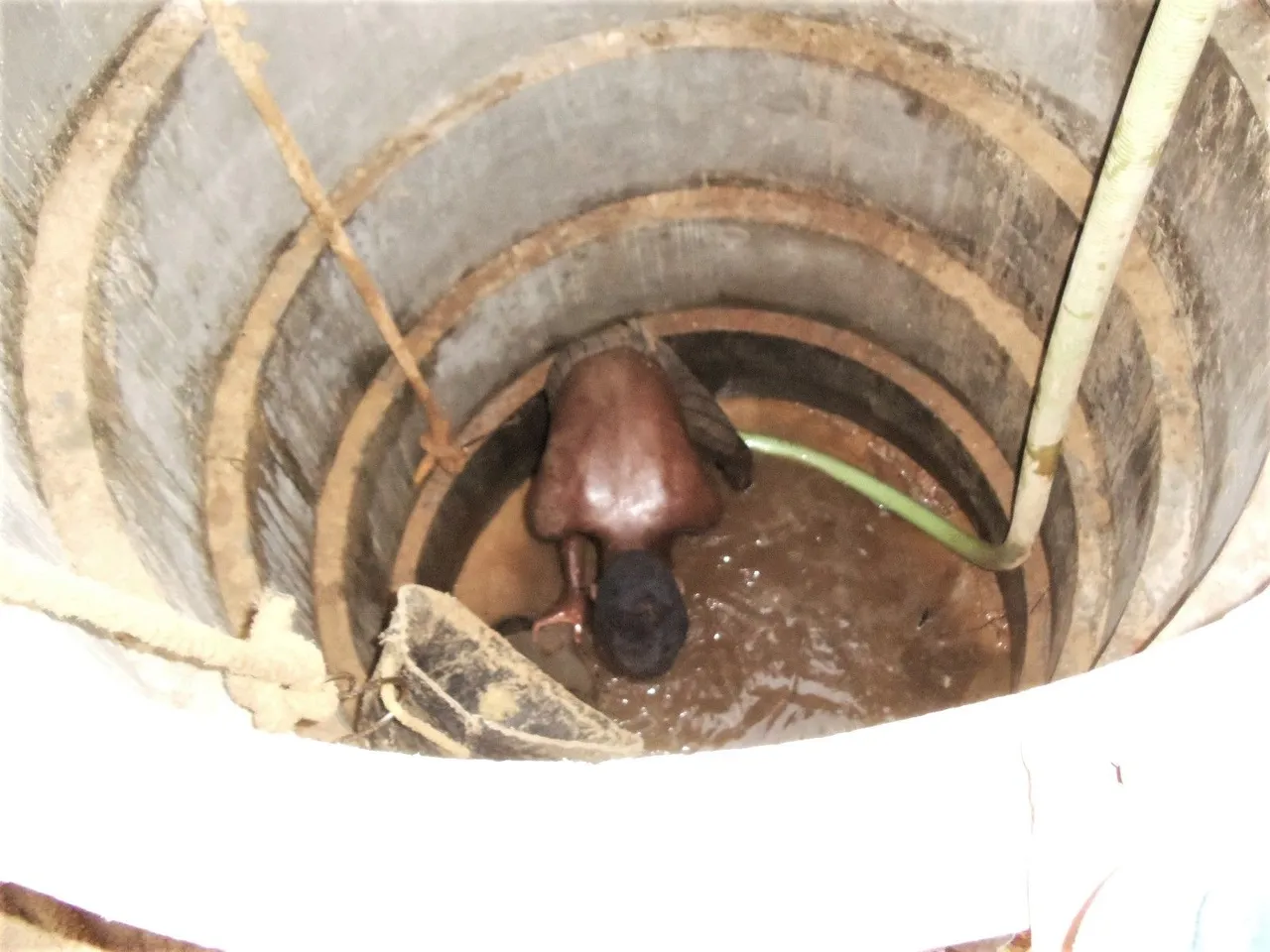
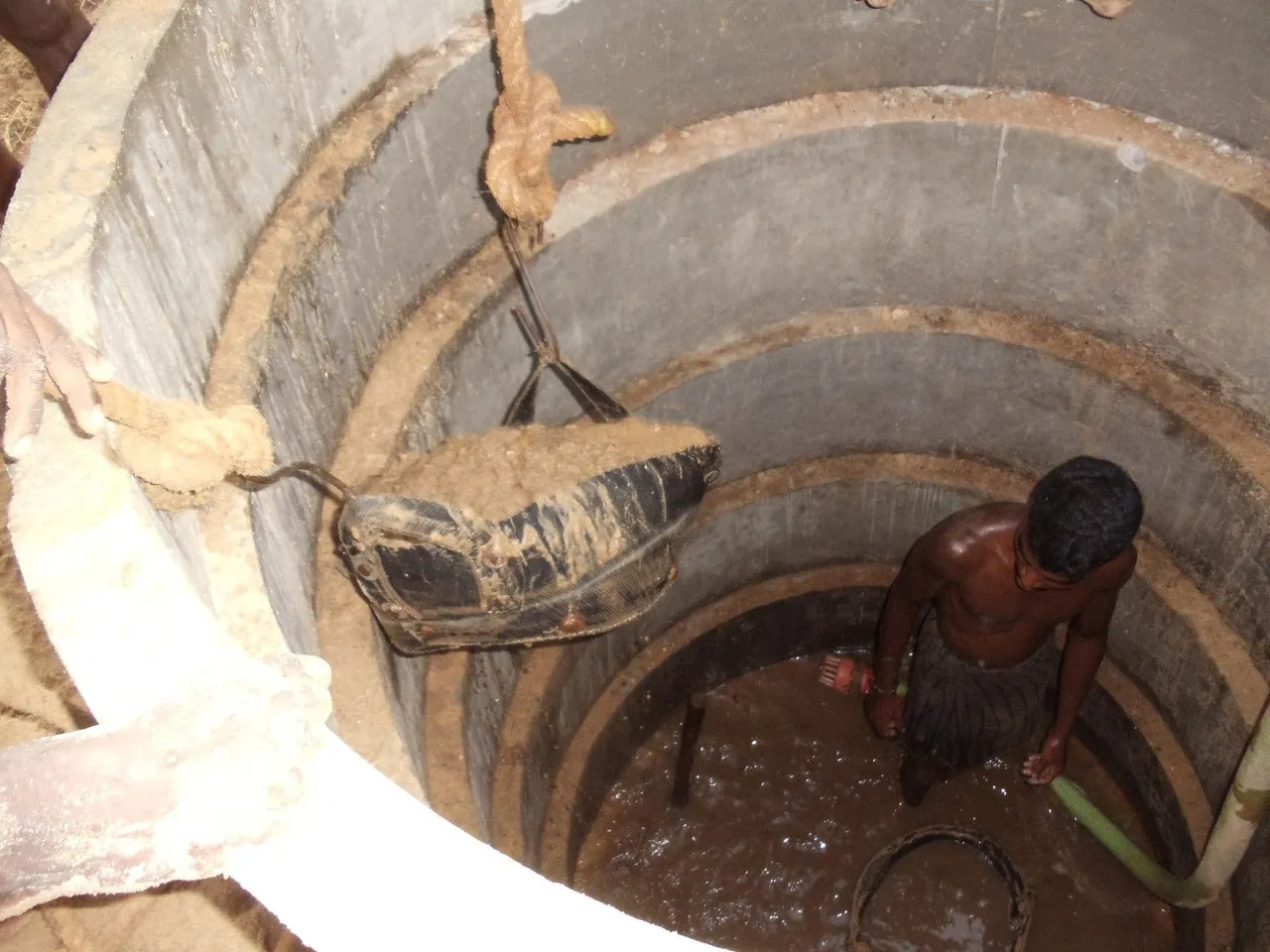
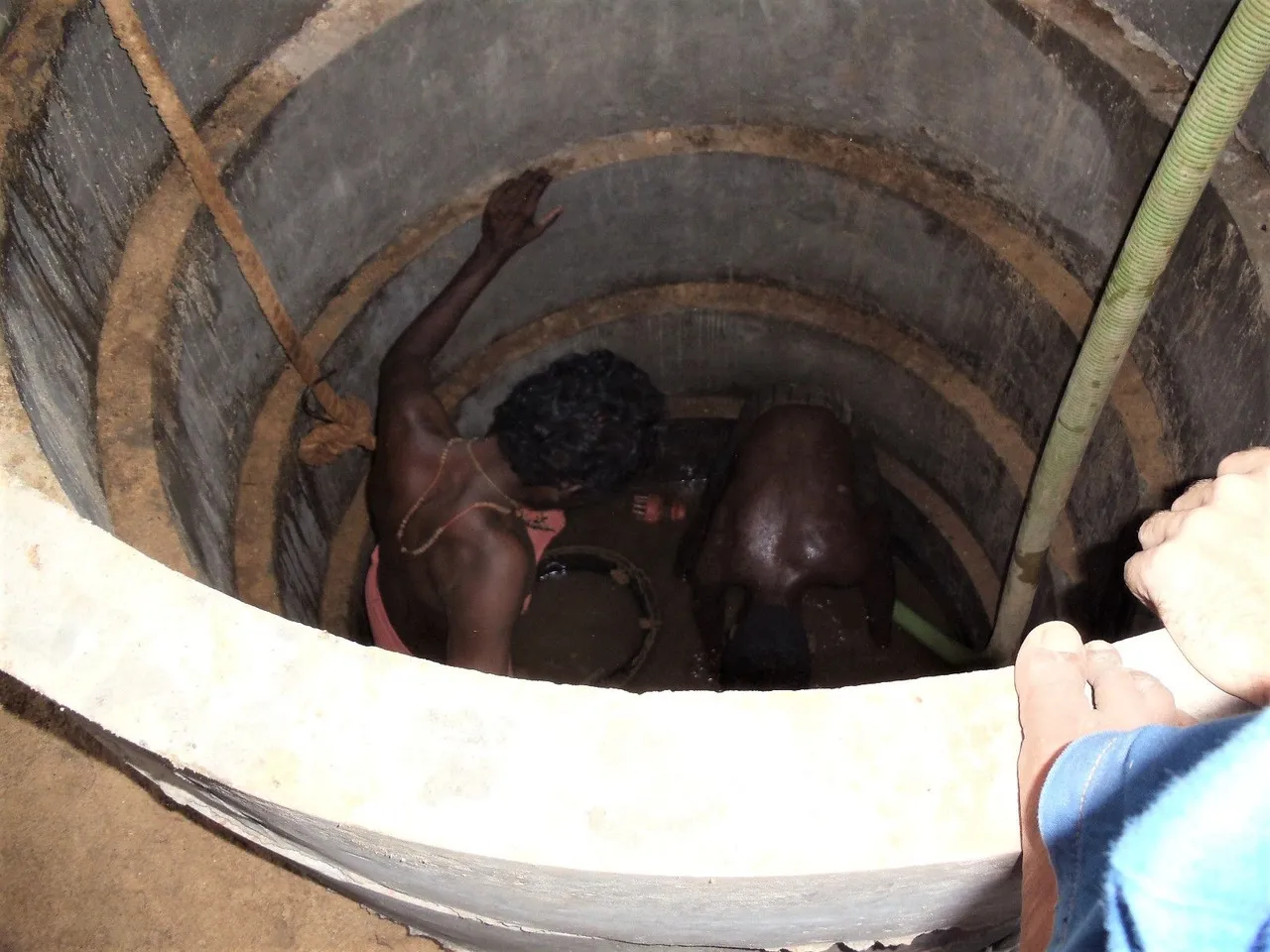
finally, the well had plenty of water flowing in so now there is no lack of water for our coconut palms and other fruit trees.
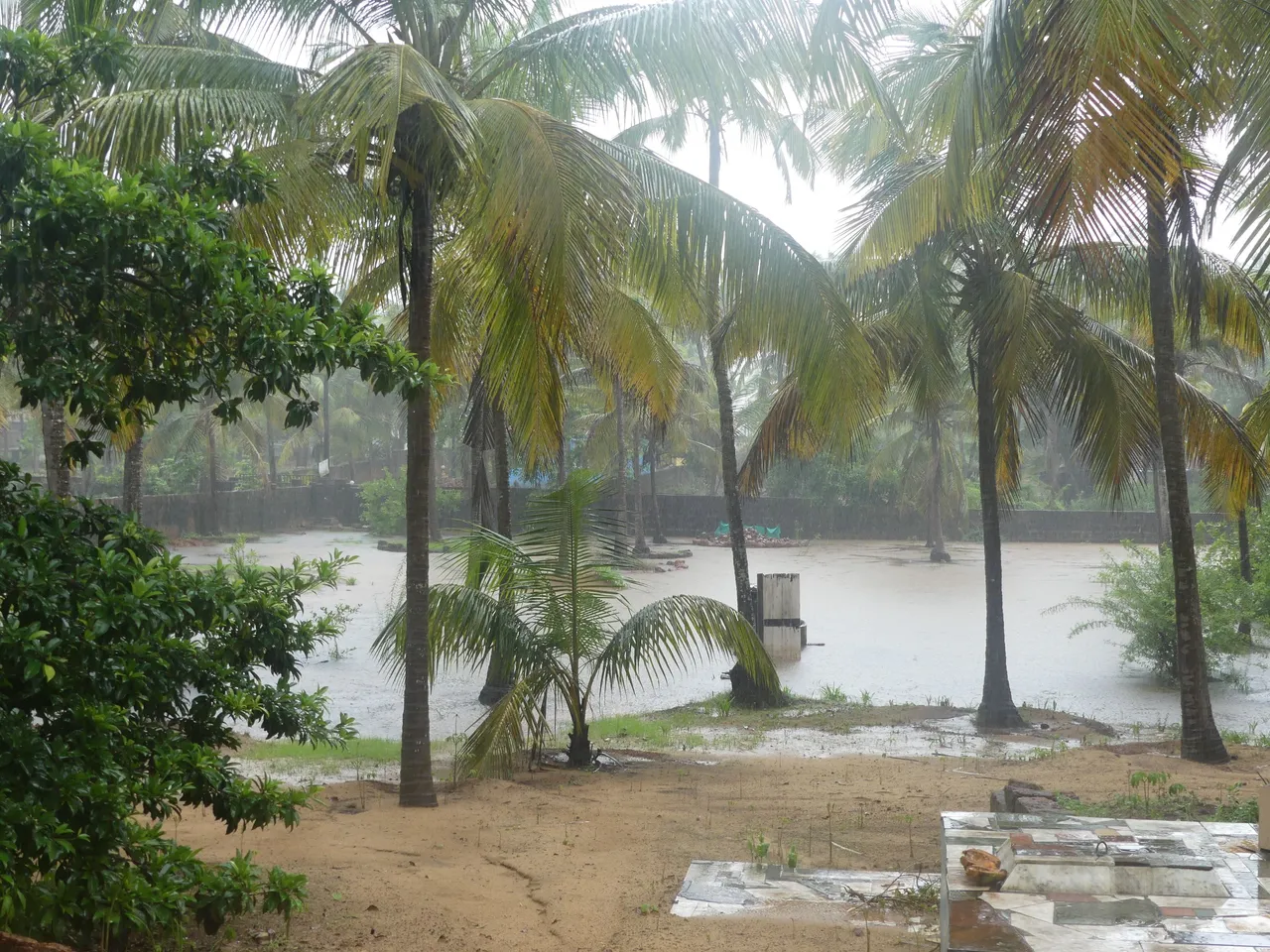
During the monsoon, the water level rises so high that even most of the above-ground rings become submerged in a seasonal pool that fills most of the back garden.
